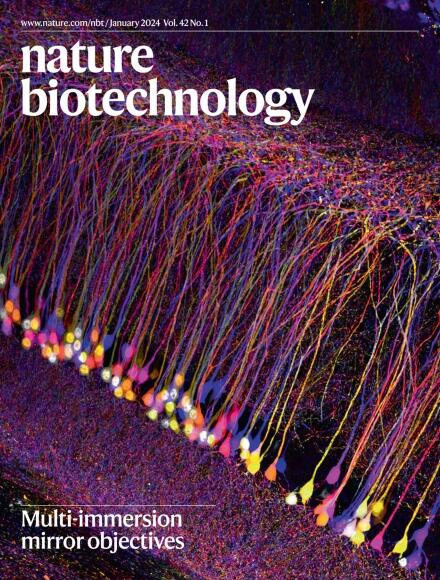禽类胚胎干细胞的衍生。
IF 41.7
1区 生物学
Q1 BIOTECHNOLOGY & APPLIED MICROBIOLOGY
引用次数: 0
摘要
生殖系胚胎干(ES)细胞已成功地从小鼠和大鼠中获得,但尚未从其他物种中获得。在这里,我们报告了从鸡和其他七种鸟类中提取胚胎干细胞的培养条件的发展。鸡胚胎干细胞表达核心多能性标记,可分化为所有胚胎胚层细胞和胚外细胞系。值得注意的是,鸡胚胎干细胞注入鸡胚胎后,嵌合率很高,在体外和卵内都能产生生殖细胞,证实了它们的生殖细胞能力。此外,我们证明了胚胎干细胞自我更新途径在禽类物种中是保守的,允许在优化的鸡胚胎干细胞培养条件下建立来自多个禽类物种的胚胎干细胞。禽类胚胎干细胞的建立为今后在基因工程和鸟类生物多样性保护方面的应用奠定了基础。本文章由计算机程序翻译,如有差异,请以英文原文为准。
Derivation of embryonic stem cells across avian species.
Germline-competent embryonic stem (ES) cells have been successfully derived from mice and rats, but not from other species. Here we report the development of culture conditions for deriving ES cells from chickens and seven other avian species. Chicken ES cells express core pluripotency markers and can differentiate into cells of all embryonic germ layers, as well as extra-embryonic lineages. Notably, chicken ES cells contribute to high rates of chimerism when injected into chicken embryos and give rise to germ cells both in vitro and in ovo, confirming their germline competence. In addition, we demonstrated that ES cell self-renewal pathways are conserved among avian species, allowing ES cells from multiple avian species to be established using optimized chicken ES cell culture conditions. The establishment of authentic avian ES cells lays the groundwork for future applications in genetic engineering and the conservation of avian biodiversity.
求助全文
通过发布文献求助,成功后即可免费获取论文全文。
去求助
来源期刊

Nature biotechnology
工程技术-生物工程与应用微生物
CiteScore
63.00
自引率
1.70%
发文量
382
审稿时长
3 months
期刊介绍:
Nature Biotechnology is a monthly journal that focuses on the science and business of biotechnology. It covers a wide range of topics including technology/methodology advancements in the biological, biomedical, agricultural, and environmental sciences. The journal also explores the commercial, political, ethical, legal, and societal aspects of this research.
The journal serves researchers by providing peer-reviewed research papers in the field of biotechnology. It also serves the business community by delivering news about research developments. This approach ensures that both the scientific and business communities are well-informed and able to stay up-to-date on the latest advancements and opportunities in the field.
Some key areas of interest in which the journal actively seeks research papers include molecular engineering of nucleic acids and proteins, molecular therapy, large-scale biology, computational biology, regenerative medicine, imaging technology, analytical biotechnology, applied immunology, food and agricultural biotechnology, and environmental biotechnology.
In summary, Nature Biotechnology is a comprehensive journal that covers both the scientific and business aspects of biotechnology. It strives to provide researchers with valuable research papers and news while also delivering important scientific advancements to the business community.
 求助内容:
求助内容: 应助结果提醒方式:
应助结果提醒方式:


